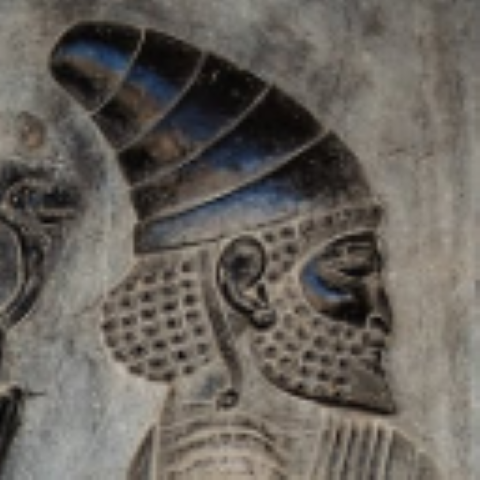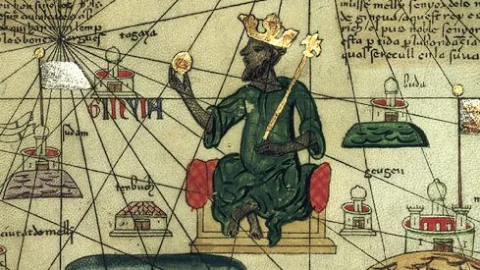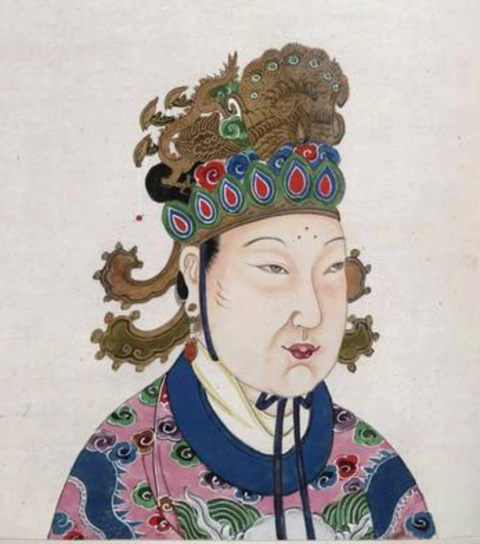The Timeless Guide to Financial Success

“The Richest Man in Babylon” is a classic personal finance book written by George S. Clason. It offers timeless financial wisdom through a collection of parables set in ancient Babylon. The book presents a series of financial principles that are still relevant today, providing valuable lessons on wealth creation, saving, and investing.
The story revolves around a fictional character named Arkad, who starts as a poor scribe in Babylon but eventually becomes the city’s richest man. Arkad shares his secrets to wealth with a group of friends, providing practical advice and financial principles to guide them on their own paths to prosperity.
The book emphasizes the importance of saving a portion of one’s income, highlighting the concept of paying oneself first. Arkad teaches his friends the “Seven Cures for a Lean Purse,” which includes principles such as setting aside at least 10% of one’s earnings, living within one’s means, and wisely investing money to make it grow.
Through the parables, Clason illustrates the power of compound interest and the benefits of making money work for you. He explains how to make sound investments and avoid speculative risks by seeking advice from knowledgeable individuals.
Another important lesson conveyed in the book is the value of acquiring financial knowledge and continuously learning about money management. Arkad encourages his friends to develop their financial intelligence and make informed decisions, emphasizing that wealth is built through discipline, patience, and perseverance.
“The Richest Man in Babylon” provides practical guidance for readers to improve their financial situations, regardless of their current circumstances. It teaches the principles of wealth creation and emphasizes the importance of taking control of one’s finances through saving, investing, and making wise financial choices.
Overall, the book serves as a timeless guide to achieving financial success by offering valuable lessons and insights that can be applied in any era. It encourages readers to adopt a mindset of abundance and take responsibility for their financial well-being, ultimately helping them build a solid foundation for a prosperous future.
The Richest Man in the World

Mansa Musa, also known as Musa I of Mali, was a 14th-century ruler of the Mali Empire in West Africa. He is widely regarded as one of the wealthiest individuals in history ($400 Billion) and a prominent figure in African history.
Mansa Musa came to power around 1312 after succeeding his predecessor, Abu-Bakr II. Under his rule, the Mali Empire reached its height, encompassing a vast territory that stretched across present-day Mali, Senegal, Gambia, Guinea-Bissau, Niger, Nigeria, and Chad.
One of the most well-known aspects of Mansa Musa’s reign was his famous pilgrimage to Mecca in 1324. This pilgrimage is considered a significant event in world history, as it brought Mali and its immense wealth to the attention of the Muslim world and the European powers. Mansa Musa’s journey to Mecca was accompanied by a large entourage, including thousands of attendants, soldiers, and slaves, and he distributed an enormous amount of gold along the way, causing inflation in the regions he passed through.
Mansa Musa’s wealth was primarily derived from Mali’s vast gold reserves. The empire controlled several gold mines and had established lucrative trade routes that brought gold, salt, and other valuable commodities to the region. Mansa Musa’s pilgrimage showcased the immense wealth of Mali, and he reportedly gave away or spent so much gold during his journey that it caused significant economic disruption in the areas he visited.
Besides his pilgrimage, Mansa Musa was known for his support of Islamic scholarship and the construction of numerous mosques and learning centers throughout the empire. He also encouraged the growth of Timbuktu as a center of Islamic learning, attracting scholars from across the Muslim world.
Mansa Musa’s reign came to an end with his death in 1337. While the Mali Empire continued to exist for several centuries, his rule marked a high point in its power and influence. Mansa Musa left a lasting legacy as a symbol of African wealth, power, and cultural patronage. His pilgrimage and the impact of his wealth on the global economy of the time have made him an enduring figure in world history.
Estimating the exact wealth of historical figures can be challenging, and determining the modern equivalent of Mansa Musa’s wealth is no exception. However, many historians and economists have attempted to make rough estimations based on historical accounts and available data.
Mansa Musa’s wealth was predominantly derived from the vast gold reserves of the Mali Empire. According to historical accounts, he controlled and effectively monopolized the region’s gold trade, including the lucrative Trans-Saharan trade routes. His empire’s gold production was so significant that it caused temporary inflation in certain areas when he distributed large amounts of gold during his pilgrimage to Mecca.
One well-known account by the Arab historian Al-Umari estimated Mansa Musa’s fortune to be equivalent to around 400 billion modern US dollars. However, it’s important to note that this figure is largely speculative and difficult to verify. It represents an attempt to contextualize the vastness of his wealth in terms of today’s economy.
To put it into perspective, if Mansa Musa’s wealth were accurately estimated at 400 billion dollars, it would place him far ahead of the richest individuals in modern history, including figures like Jeff Bezos and Bill Gates.
@ultradigitalwave Mansa Musa : The Richest Man to Ever Live #history #africanhistory #storytime #ultradigitalwave #epic #africa #gold #golden ♬ original sound – ultradigitalwave – Ultra Digital Wave
The Richest Woman in the World

China’s Empress Wu of the Tang dynasty (624-705), who’s estimated net worth today: US$16 trillion.
The following excerpt is courtesy of the South China Morning Post …Empress Wu of the Tang dynasty is argued to be the richest female monarch in history, according to Money.com.
Her colossal fortune, however, is said to have stemmed from a blood-soaked, scheming rise to power. According to historians, she was ruthless in her ways and, reportedly, even murdered one of her own children. She’s also said to have deposed her sons who were emperors before her, although considering this was so long ago, it’s difficult to verify which events really took place.
Under Wu’s 15-year reign, she helped to expand the nation’s empire into central Asia and saw its economy prosper with the trading of tea and silk with Western countries on the Silk Road, as reported by The China Project.
Today, she remains a controversial figure for some, but is widely considered to have made a significant contribution in supporting the country’s growth at the time.
Credit: scmp.com/wu
The Empress of China
Empress Wu Zetian, also known as Wu Zhao, was a remarkable figure in Chinese history and the only female emperor of the Tang Dynasty. While not traditionally recognized as the richest woman of her time, Empress Wu possessed significant wealth and employed various methods to accumulate and maintain her financial power.
Born in 624, Wu entered the imperial palace as a concubine of Emperor Taizong. Following the emperor’s death, she became a concubine of his son, Emperor Gaozong. Wu’s rise to power truly began after the emperor suffered a stroke, leaving him incapacitated. Seizing the opportunity, Wu skillfully manipulated the court and eventually assumed power as empress dowager in 660, after Emperor Gaozong’s death.
As empress dowager, Wu wielded immense authority and took several steps to expand her wealth. She established a vast network of spies, informants, and loyal supporters to gather intelligence and maintain control over the empire. She used this network to eliminate political rivals and consolidate power, ensuring the stability of her reign and consequently her wealth.
Empress Wu also focused on economic reforms and advancements during her rule. She implemented policies that stimulated agriculture, trade, and manufacturing, contributing to overall economic growth. These measures allowed her to collect substantial taxes, tariffs, and tributes, further bolstering her financial resources.
Furthermore, Empress Wu actively encouraged foreign trade and diplomatic relations, particularly with neighboring countries like Korea and Japan. By promoting international commerce, she profited from increased imports and exports, amassing wealth through trade-related activities.
It is important to note that Empress Wu faced accusations of corruption, bribery, and extortion throughout her reign. These allegations suggest that she employed less-than-ethical means to accumulate wealth, although the exact extent of her involvement remains a subject of historical debate.
Overall, Empress Wu Zetian’s wealth stemmed from a combination of political maneuvering, economic policies, and international trade. Her cunning and astute leadership allowed her to amass significant resources and secure her position as one of the most influential figures of the Tang Dynasty.
5 Rules to $100,000,000
Jesse Livermore was an American stock trader and investor who lived from 1877 to 1940. He is widely regarded as one of the greatest traders in stock market history. Livermore gained fame and fortune through his speculative trading activities in the early 20th century.
Livermore was born in Shrewsbury, Massachusetts, and began his trading career at a young age. He started by working as a “chalk boy,” writing stock prices on a chalkboard in a brokerage office. Through observation and practice, he developed his own trading strategies and eventually became a successful independent trader.
One of Livermore’s most notable accomplishments was his ability to profit from both bull and bear markets. He famously made substantial profits by short-selling stocks during the stock market crashes of 1907 and 1929. Livermore was known for his astute market analysis, his ability to anticipate market trends, and his disciplined approach to trading.
Livermore made his first significant fortune during the Panic of 1907 when he correctly anticipated the market crash and profited from short-selling stocks. It is reported that he made profits of around $3 million (equivalent to approximately $80 million today) during this period.
Livermore’s most famous trade occurred during the Wall Street crash of 1929. He shorted stocks and reportedly made profits of around $100 million (equivalent to several billion dollars today) by betting against the market.
In 1940, Jesse Livermore tragically took his own life. His life story was later chronicled in the book “Reminiscences of a Stock Operator” by Edwin Lefèvre, which remains a popular read among traders and investors to this day. Livermore’s trading strategies and insights continue to influence traders and investors around the world.
The Rise and Fall of Money
Who’s Ray Dalio?
Ray Dalio is an American billionaire investor, hedge fund manager, and philanthropist. He is the founder of Bridgewater Associates, one of the world’s largest and most successful hedge funds. Born on August 8, 1949, in Jackson Heights, New York, Dalio began his investment career in 1975 from a small office in his apartment.
Under Dalio’s leadership, Bridgewater Associates grew into a highly influential and respected investment firm known for its systematic and research-driven approach to investing. The firm employs a philosophy known as “Principles,” which incorporates a set of principles for decision-making and management. Dalio himself has written and shared these principles through his book “Principles: Life and Work.”
Ray Dalio is also known for his emphasis on economic cycles and his understanding of macroeconomic trends. He gained recognition for accurately predicting and navigating major financial crises, including the 2008 global financial crisis.
In addition to his success in the financial industry, Dalio is involved in philanthropy. He has pledged to donate the majority of his wealth to charitable causes through the Dalio Foundation. The foundation focuses on education, ocean exploration, and mental health initiatives.
Dalio is widely regarded as one of the most influential and respected investors in the world. His insights and perspectives on the economy and investing are often sought after and he has been featured in various media outlets and conferences.